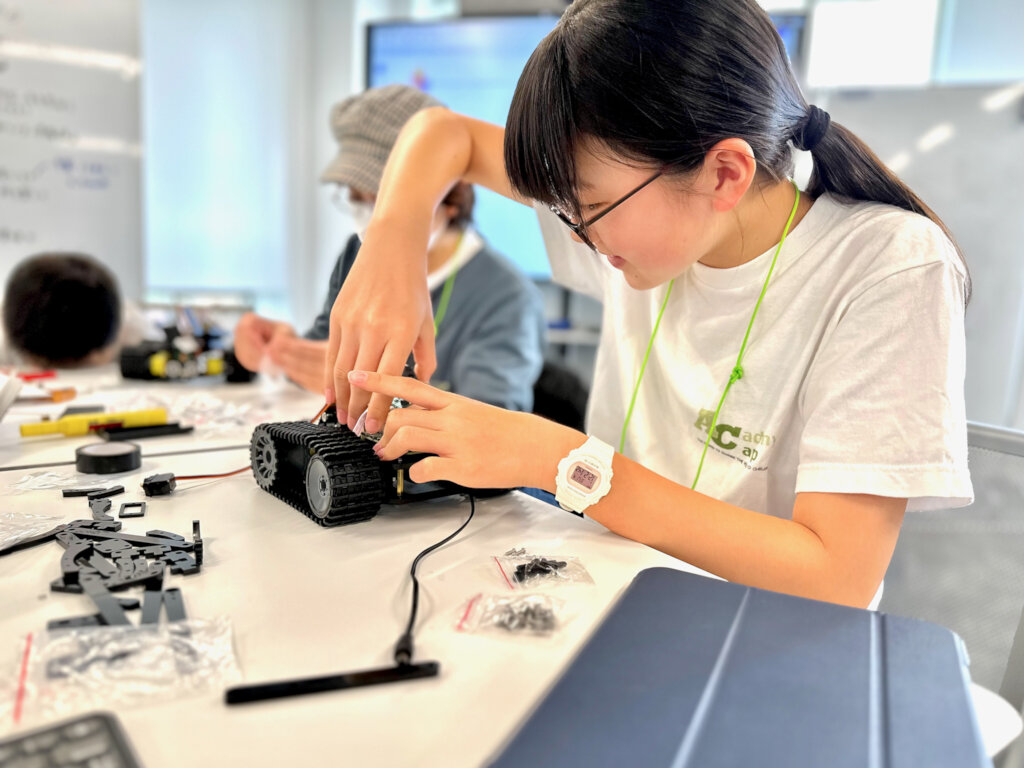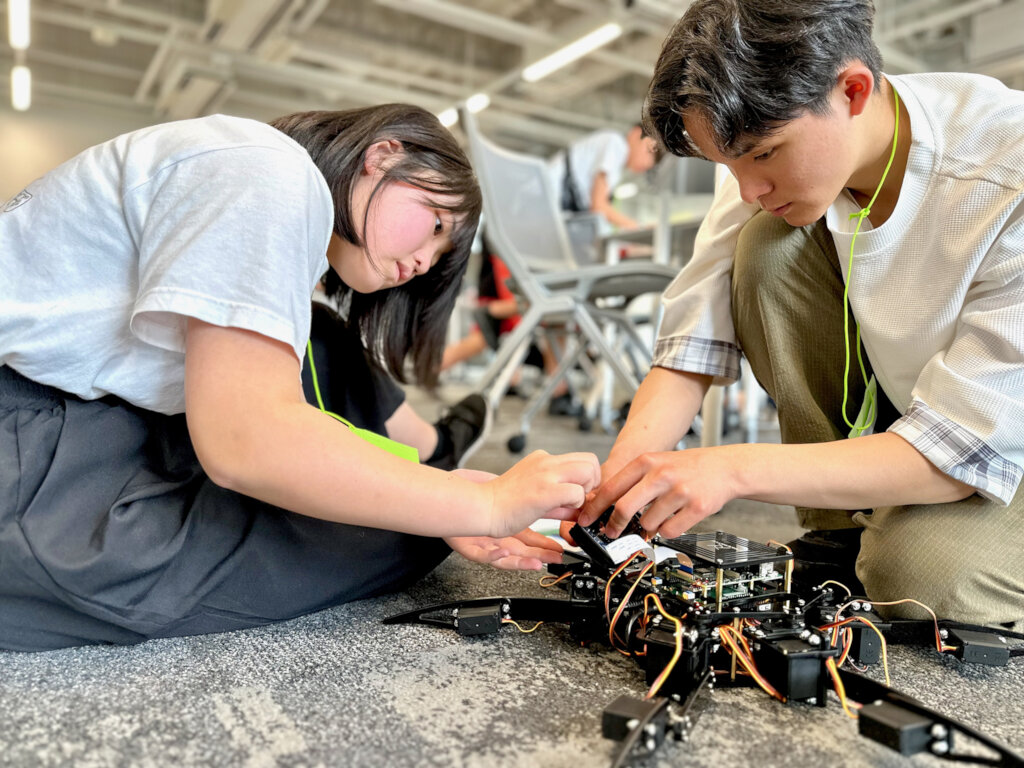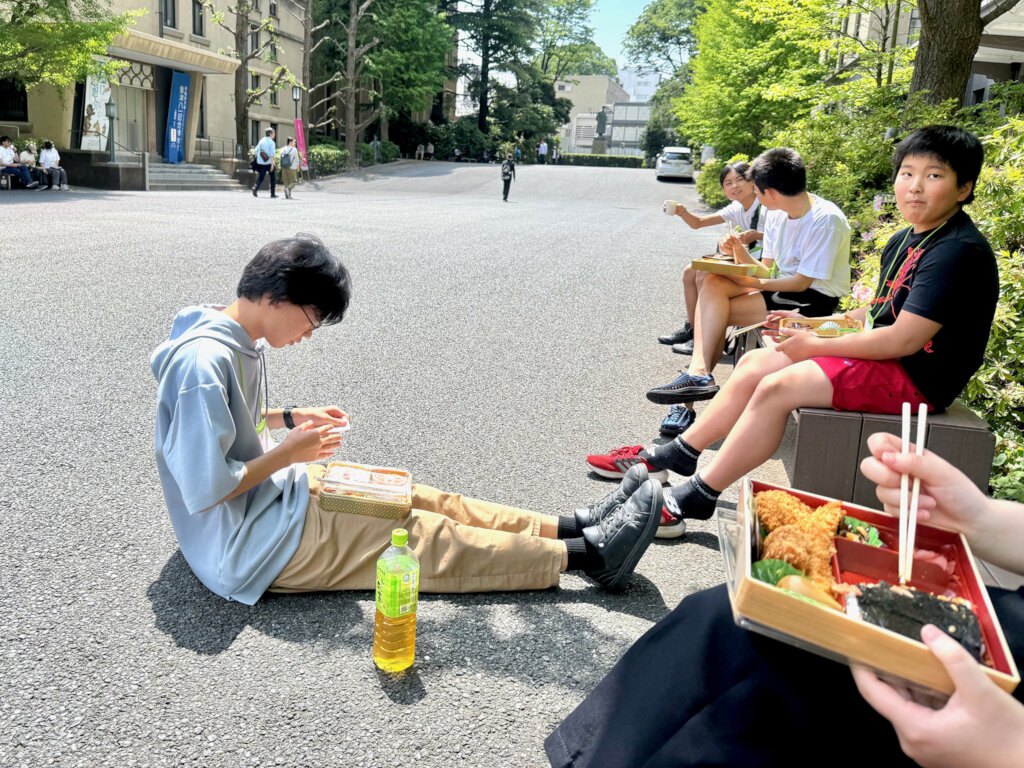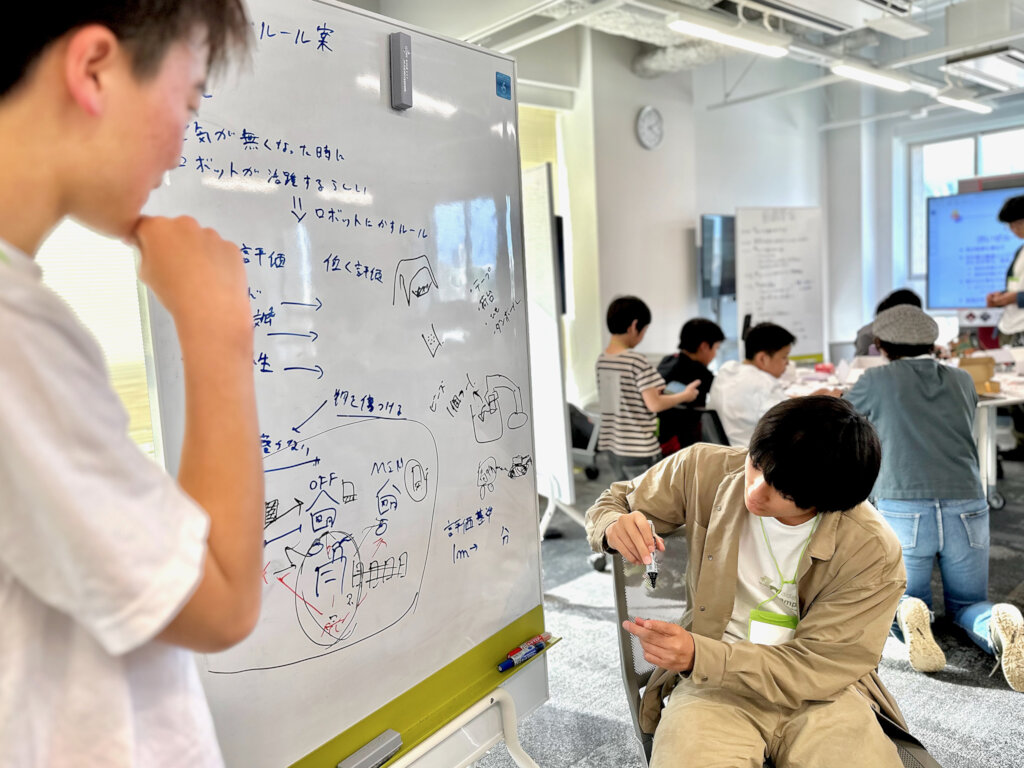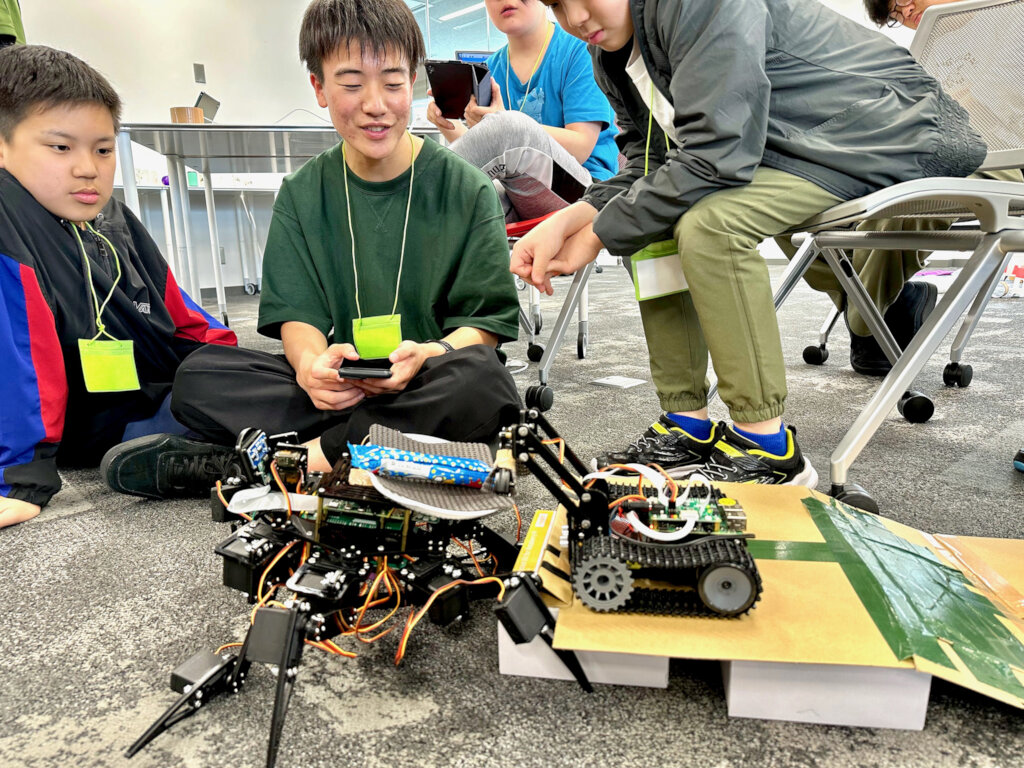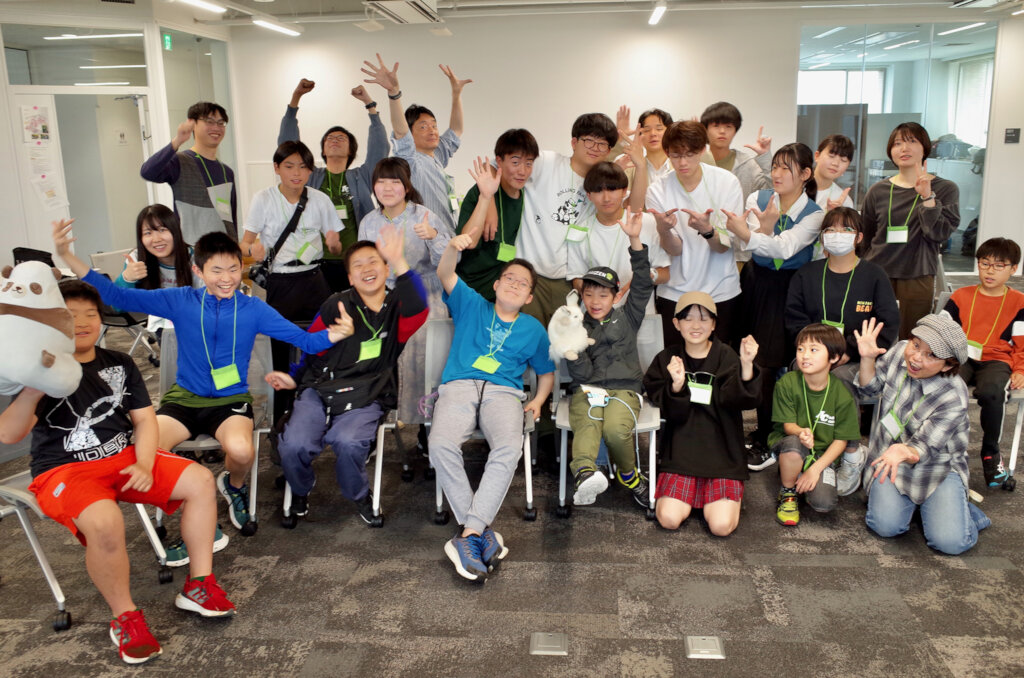By Kenji Saito | Representative Director
Please find a Japanese version of this report here.
We held another edition of our Academy Camp focused on robots and AI over four days and three nights during Japan’s Golden Week holidays in May 2025, once again at Waseda University’s Waseda Campus. A total of 19 participants ranging from elementary to high school students gathered from the Tohoku and Kanto regions. Among them were six high school students who took on the role of sub-leaders, acting partly as staff to support the younger participants.
The goal of this camp was to design, in the form of a game, a new type of energy infrastructure for a future village envisioned to be electrically autonomous. In this scenario, every house would generate its own electricity, and if any home experienced a shortage, instead of relying on traditional power lines (which would cause blackouts if severed), a robot would transport a battery from a neighboring house. To realize this, each team started by assembling two types of robots from commercially available kits: a hexapod robot capable of carrying objects, and two tank robots equipped with mechanisms to grasp and release items. The teams then integrated AI into each robot and programmed them through Japanese-language interactions, effectively instructing and fine-tuning the robots’ behavior to collaboratively build the envisioned system.
This challenge proved to be quite difficult. Even the first step—assembling the robots from the kits—took much longer than expected, and many teams struggled to put the robots together correctly. Nevertheless, the participants showed remarkable creativity. They built simple diorama-like models of the village mainly out of paper, and by issuing voice commands to their robots, they succeeded in having the robots transport objects that represented batteries. One of the most impressive achievements came from a team that used only the hexapod robot to push and roll a ball, which they ingeniously imagined as a protective spherical casing for the battery, safely delivering it to its destination.
If human thinking can be divided into two patterns—persistently achieving given goals by overcoming difficulties, and creatively inventing things that do not yet exist—this camp once again revealed that our participants tended to struggle more with the former, while excelling at the latter to a degree that hardly required any training. Since there was not enough time for them to fully enjoy designing the energy infrastructure game for the future village, we decided to revisit the same theme in our next camp. Through this experience, we also identified a new challenge: how AI and robots can better support children in the areas where they face difficulties, and how to reflect that understanding in the design of our future camps.
Links:
By Kenji Saito | Representative Director
By Kenji Saito | Representative Director
Project reports on GlobalGiving are posted directly to globalgiving.org by Project Leaders as they are completed, generally every 3-4 months. To protect the integrity of these documents, GlobalGiving does not alter them; therefore you may find some language or formatting issues.
If you donate to this project or have donated to this project, you can receive an email when this project posts a report. You can also subscribe for reports without donating.
Support this important cause by creating a personalized fundraising page.
Start a Fundraiser